Tucked away in the narrow bylanes of Dongri, lies the Moghul Masjid, arguably the oldest piece of Iranian heritage in Mumbai. As the mosque turns 155 this year, Anju Maskeri takes a tour of the mosque
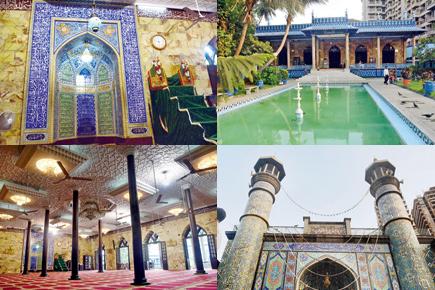
Moghul Masjid
As we enter a narrow bylane of Dongri, which leads towards the mosque, the din of the chaotic traffic on the main road mellows, giving a hint of the serenity that awaits us. With its two minarets glinting in the evening sun, the Moghul Masjid is a majestic piece of Iranian heritage that has withstood the travails of time.The place almost transports one to Iran with its ornate architecture, the pristine water in the pond, the beautiful fountain and well-manicured lawns. Hossain Najafi (29) a third generation Iranian living in Mumbai, reminisces coming to the mosque with his grandfather. “I’ve been coming to this masjid since I was a kid. The peace and serenity here makes you forget about all your problems and the architecture is one of the best I have ever seen," he says.
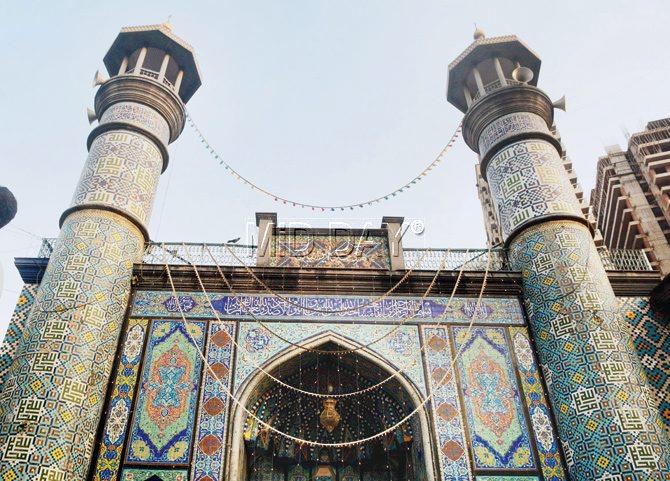
Two minarets, a feature of Shia mosques. Pic/Sayyed Sameer Abedi
ADVERTISEMENT
Once upon a time
The masjid was built in 1860 by a wealthy Iranian merchant, Haji Mohammad Hussain Shirazi. “There was a reason behind building the mosque in Bhendi Bazaar. At that point of time, this area was considered an uptown, a bastion for big traders and exporters who would come with ship-loads of goods,” says Ali Namazi, the honorary secretary of the mosque. These traders contributed heavily to the construction of religious places in Dongri. The area is dotted with community halls and imambadas.
The pond or 'hauz' at the entrance. Pic/Sayyed Sameer Abedi
Reza Masoudi Nejad, a research scholar, in his thesis, ‘Practising Fractal Shi’i Identities through Muharram Rituals in Mumbai,’ writes, “Through a short walk around Dongri you can experience the diverse cultural background of the Shi’a communities through the architecture of religious places.”
Brick by brick
The masjid was built on the lines of the mosques in Shiraz, Iran. A peculiar feature of Shirazi architecture is that the mosques have only two minarets and no dome. The inner walls of this masjid have been made using a combination of Onyx and granite. One can also see several surahs (verses) from the Holy Quran engraved on the walls. The foundation of the ‘mehrab’ or the inner sanctum is made of mud from the holy city of Karbala, Iraq.
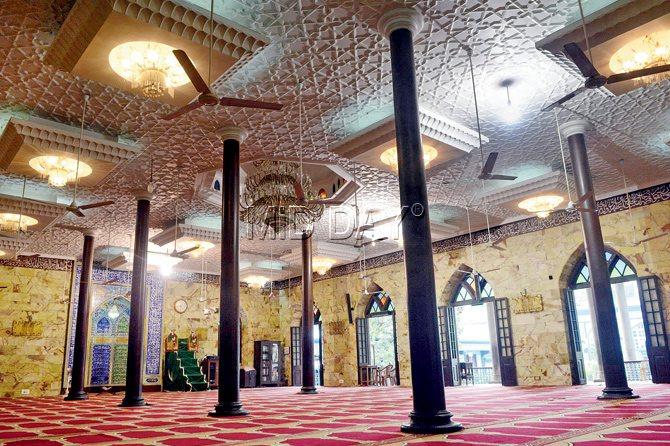
The main prayer hall. Pic/Sayyed Sameer Abedi
The exterior façade of the mosque is built using translucent mosaic tiles that reflect light, giving it a surreal effect. And the ornate crystal chandeliers and exquisite carpets have been imported all the way from Iran.
The pond or what they call ‘hauz’ was originally meant to be the place where ablutions were taken. However, with the construction of taps, the pond is now more of a decorative piece. “The tiles are wiped and cleaned everyday and the carpets are washed twice a year. During the monsoon, we do the water proofing of the place. We have about 12-odd people to look after the mosque,” says Nemazi. The mosque is managed by the Haji Mohammed Shirazi trust. The structure underwent a major facelift in 1996 under architect Reza Kabul who helped restore the mosque to its original glory.
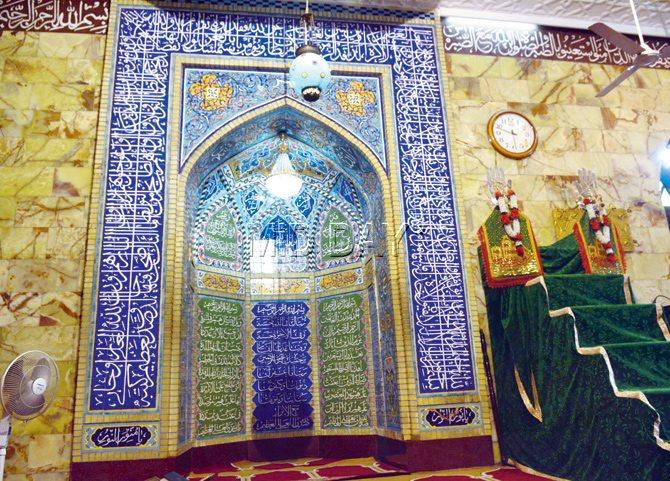
The Minakari tiles specially imported from Iran. Pic/Sayyed Sameer Abedi
A typical day
The mosque opens at 5 in the morning with the recitation of the morning prayer (fajr) followed by the afternoon namaaz (Zohr Asr) and then the evening prayer (Maghrib). “All through the year the masjid holds ‘majlis’, a gathering held in the memory of departed souls. Most notable among these are the ones held during Muharram, Ramadan and Ayam-e-Fateimieh (celebrated as Women’s Day in Iran),” reveals Nemazi.
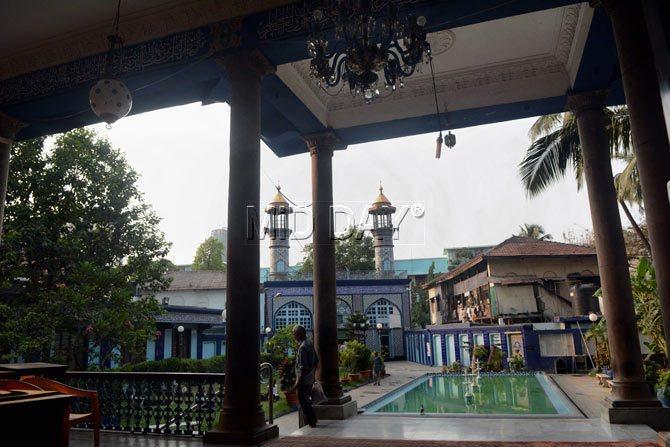
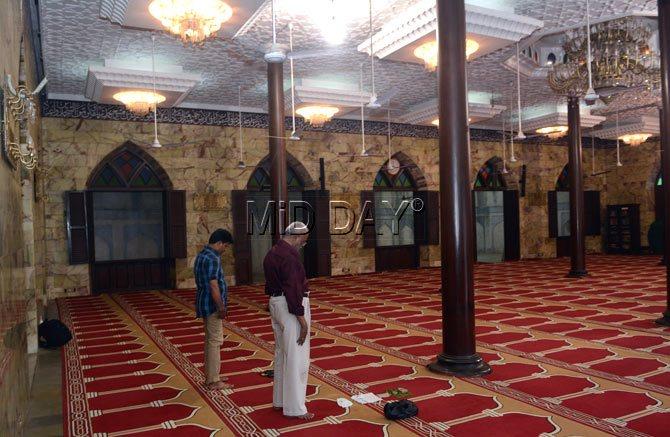
In fact, in a first of sorts, a television crew from Iran was allowed to shoot in the mosque this month. “The only reason we allowed it was because it was meant for a religious show,” he explains.
Two-tenth of the mosque is reserved for women. Although women are restricted from entering the main hall, the mosque has opened its doors for women on special occasions. “If men and women are allowed to pray alongside each other in Mecca, why not here? It is about the culture and nothing to do with Shariah,” says Namazi.
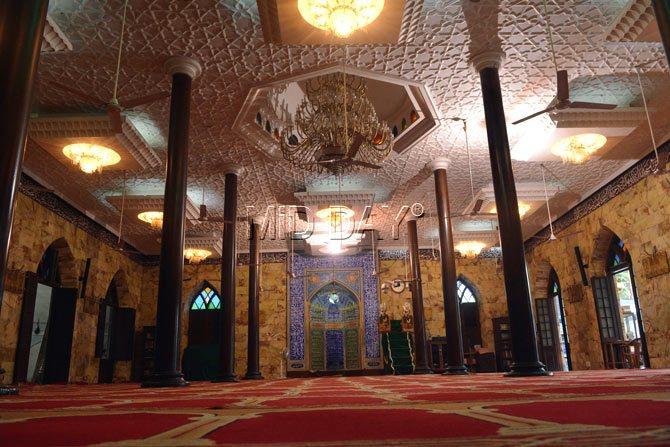
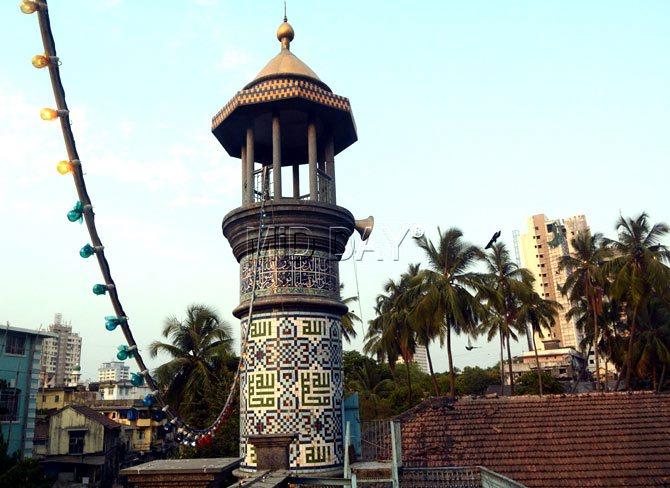
Sarover Zaidi, a research scholar who has explored the anthropological and historical aspect of the mosque, says, “The Moghul Masjid is important for both Iranians as well as the Shias from Bombay and was built as a statement of solidarity. The mosque is not just a heritage piece but a place that brims with life.” Zaidi adds that the mosque has a space beyond prayer. “It provides a sense of relaxation in a crowded area.You will notice people sitting, relaxing, reading the newspaper. It’s a combined space of religion and leisure,” she reveals.
Interestingly next to the masjid, lies the only surviving Irani Hamam (Turkish bath) in India. Apparently it was built around the same time as the Moghul Masjid and was once quite a popular spot among the Iranians living here. We are told that visitors can get a massage for Rs 150. Well, we’d give that a pass for now.
 Subscribe today by clicking the link and stay updated with the latest news!" Click here!
Subscribe today by clicking the link and stay updated with the latest news!" Click here!








